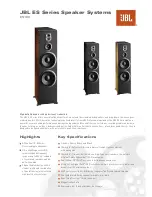
32 – Part 3: Solar water heater system installation
Part 3: Solar water heater system installation – 33
Commissioning the solar system
Prior to filling the solar collectors with heat transfer fluid, ensure that the collectors have been covered for a minimum of 1
hour. The solar loop piping should be pressure tested with air (80 psi) and checked for leaks before you pressurize the solar
collector loop with glycol. The charging process will require a low flow high head end suction pump to fill and pressurize the
collector loop.
1. Mix the propylene glycol and distilled water in accordance with the propylene glycol Data Sheet in the back of this manual.
Two collector systems will require approximately 6 gallons of fluid; three collector systems will require approximately 7.5
gallons of fluid. Connect the discharge hose from the end suction fill pump to the pump station fill valve connector (1).
Connect the fill pump return hose to the pump station drain valve connector (2). Prime the end suction pump.
2. Open the fill valve (1) and drain valve (2). Open the “hot ”(3) isolation valve turning it fully counterclockwise to the vertical
position. Close the “cold” (4) isolation valve turning it fully clockwise to the horizontal position. Turn on the end suction
pump to begin charging the collector loop with glycol. Run the pump 15-20 minutes to purge air from the system while
periodically opening and closing the “cold” (4) isolation valve.
3. With the pump running and while watching the system pressure gauge (5), adjust the fill valve (1) to the almost closed
position. Close the drain valve (2) and allow the system pressure to slowly build up to 50 psi -- immediately close the fill
valve (1) and then turn off the pump.
4. Remove the fill pump hoses from the pump station controller and install the fill valve and drain valve caps 1(a) and 2(a).
5. Turn power on to the pump station.
6. Fully open “hot ”(3) and “cold” (4) line isolation valves.
7. Bleed air from the pump (6)
5
4
3
1
1(a)
2(a)
2
6
















































